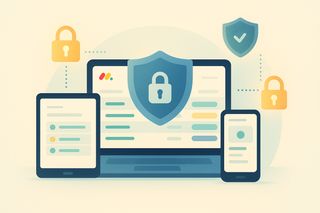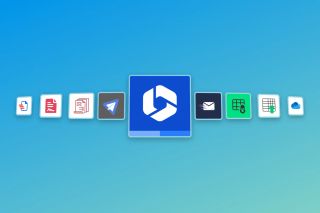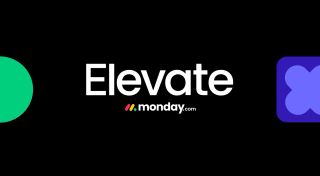Protect your data and comply with UK GDPR when integrating apps with monday.com. Here's a quick checklist to ensure your integration is secure, compliant, and efficient:
- Access Control: Use role-based permissions, secure API tokens, and IP whitelisting.
- Data Protection: Encrypt data at rest and in transit, classify sensitive data, and enable access logging.
- Compliance: Keep records of data processing, conduct Data Protection Impact Assessments (DPIAs), and manage subject rights like data deletion or access requests.
- Development Security: Use TLS 1.2 or higher, separate testing from production, and update keys regularly.
- Security Protocols: Validate JSON Web Tokens (JWT), update encryption keys frequently, and limit token scopes.
- Continuous Monitoring: Perform vulnerability scans, penetration tests, and configuration audits regularly.
- Incident Response: Develop and maintain an incident response plan to handle threats swiftly.
Quick Tip: Regularly review and update your security measures to stay ahead of potential risks. monday.com’s enterprise-level security tools can help you maintain compliance and protect sensitive data effectively.
This guide provides a structured approach to secure your integration with monday.com while meeting UK regulatory standards.
MAXIMIZE Your Security with monday.com Like a PRO!
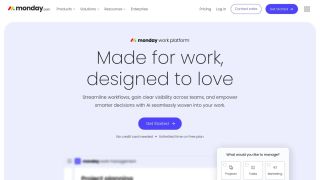
Before You Start: Security Basics
Before diving into integration, it’s crucial to put in place key security measures to safeguard your organisation’s data. These steps help you stay compliant with UK data protection laws while keeping your monday.com workspace secure.
Check Access Rights
Managing access is a vital part of secure integration. Start by reviewing developer permissions within monday.com's security framework:
- Admin Access Verification: Ensure you have administrative rights to access the API.
- Role-Based Permissions: Set specific access levels for each team member involved in development.
- API Token Management: Generate unique API tokens and store them securely.
Set Up Secure Development
Your development environment needs to align with monday.com's security standards. Make sure the following configurations are in place:
| Security Component | Required Configuration | Verification Method |
|---|---|---|
| SSL/TLS Protocol | Use TLS 1.2 or higher | Run a security scanner check |
| Development Tools | Use the latest stable versions | Check through version control |
| Testing Environment | Keep it separate from production | Ensure network segmentation |
| Access Controls | Enable IP whitelisting | Review access logs |
Protect Sensitive Data
Before handling sensitive data, implement strong protection measures:
Encryption
Use encryption protocols for data both at rest and in transit. Secure key management is essential for this process.Data Classification
Categorise your data into types such as business-critical, personal information under UK GDPR, or general operational data.Access Logging
Set up logging systems to monitor:- Authentication attempts
- Data access patterns
- Any changes to the system
These steps lay the groundwork for more advanced security configurations in the next section.
Security Protocols
Strong security measures are essential to protect your monday.com app integration from threats. These measures act as the foundation for your security setup. Below, you'll find guidance on setting up JWT, managing user access, and updating keys effectively.
Set Up JWT Security
JSON Web Token (JWT) validation plays a key role in securing monday.com API requests. To ensure your JWT implementation is secure, follow these best practices:
- Set an appropriate token expiry time to limit exposure.
- Use secure signature algorithms like RS256 or stronger.
- Store tokens and keys securely, such as in HTTP-only cookies or approved key management systems.
- Limit token scope to only what's necessary, following the principle of least privilege.
Strictly verify and validate tokens to maintain security.
Set User Access Levels
Granular access controls help protect sensitive data while maintaining operational efficiency. monday.com offers tools to customise permissions:
Role-Based Access Control (RBAC):
- Assign roles based on specific job functions.
- Clearly separate administrative, developer, and end-user access.
- Regularly review and audit role assignments.
Resource-Level Permissions:
- Set detailed permissions for different platform resources.
- Customise access levels to suit the needs of each resource.
Update Security Keys
Regular key updates are essential for protecting your integration. Follow these steps:
- Periodically rotate API keys, JWT signing keys, and encryption keys as per your organisation’s policy.
- Use secure methods to store keys, such as key management systems.
- Maintain detailed logs of key changes and notify team members promptly to avoid disruptions.
Frequent key updates are a critical part of maintaining security.
Data Security Rules
Protecting data effectively is essential when connecting apps with monday.com. Following these guidelines will help you comply with UK regulations and safeguard data integrity throughout the integration process.
Data Storage Options
monday.com offers secure storage through its advanced security systems, which include built-in encryption and privacy controls. The platform’s infrastructure is designed to meet high-level security standards while allowing precise management of data access. Ensure your storage methods align with GDPR standards for a smooth integration process.
UK GDPR Requirements
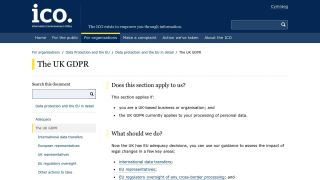
To comply with UK GDPR when integrating apps with monday.com, implement the following:
Data Processing Records
Keep thorough records of data processing activities, such as:- Reasons for processing
- Types of personal data involved
- Retention periods
- Security measures in place
Data Protection Impact Assessments
Conduct and document assessments that identify:- Risks to individuals' data
- Strategies to reduce risks
- Technical safeguards used
Subject Rights Management
Make sure your integration supports:- Access requests from individuals
- Requests for data deletion
- Data transfer capabilities
Data Encryption Steps
Secure data both during transfer and while stored by using strong encryption protocols. For sensitive data, add another layer of encryption at the application level.
Enhance your workflows with David Simpson Apps
Discover powerful apps and integrations for monday.com, Atlassian, and Microsoft 365. Streamline processes, embed analytics, and boost collaboration.
Explore appsSecurity Checks
Implement thorough security checks to safeguard data and meet industry requirements. Building on earlier security practices, these measures help secure your integration effectively.
Security Measures
monday.com's enterprise-level security framework includes several key steps for app integration:
- Input Validation: Check all inputs to prevent injection attacks and data corruption.
- Access Controls: Regularly review and apply detailed access controls.
- Audit Logging: Record all authentication attempts, data access, system changes, and security events.
Security Documents
Ensure you have the following documentation ready for your monday.com app integration:
| Document Type | Required Content | Update Frequency |
|---|---|---|
| Security Policy | Details on access controls, data handling, and incident response | Quarterly |
| Risk Assessment | Analysis of vulnerabilities and mitigation plans | Bi-annually |
| Compliance Records | Certification updates, audit trails, GDPR adherence | Monthly |
Review Requirements
Before launching your integration, confirm it meets monday.com's security standards:
1. Security Architecture Review
Examine your integration's security framework, including encryption, authentication methods, and data flow processes.
2. Vulnerability Assessment
Carry out detailed vulnerability scans and penetration tests. Document any issues found and the steps taken to resolve them.
3. Compliance Verification
Check that your integration aligns with monday.com's Trust Centre guidelines and industry benchmarks. Ensure all security certifications are up to date and well-documented.
These steps help ensure your integration is secure and ready for deployment.
Security Maintenance
Keep your integrations secure with ongoing monitoring and preventive measures.
Security Testing
Regular testing is crucial to spot vulnerabilities early. Implement these tests:
| Testing Type | Frequency | Key Components |
|---|---|---|
| Vulnerability Scans | Regularly | Automated checks, code analysis, and dependency reviews |
| Penetration Testing | Periodically | External assessments and simulated breach attempts |
| Configuration Audits | Regularly | Reviews of API settings, permissions, and parameters |
After testing, actively monitor security logs to address any risks promptly.
Check Security Logs
Monitoring security logs helps detect and manage threats effectively:
- Real-time Monitoring: Set up automated alerts for unusual activity.
- Log Analysis: Keep detailed records of:
- User authentication events
- Data changes
- System configuration updates
- API usage trends
- Compliance Documentation: Securely store logs to meet UK GDPR standards. Encrypt logs and limit access to authorised personnel only.
Detailed log reviews enable faster and more informed responses to incidents.
Security Response Plan
Develop an incident response plan that outlines actions for different security scenarios:
Incident Classification
Create a system to classify incidents by severity, ensuring timely responses and clear notification procedures.Response Protocol
Define steps for handling incidents, such as:- Containing threats immediately
- Preserving evidence
- Documenting incidents thoroughly
- Communicating with stakeholders
- Restoring systems safely
Recovery Procedures
Plan for quick recovery by detailing:- Data restoration processes
- System integrity checks
- Deploying necessary patches
- Resetting access controls
- Testing integration functionality
Keep your response plan up-to-date and conduct regular drills. Store all related documents securely in an encrypted, access-controlled system with version tracking.
Conclusion
Ensuring secure integrations with monday.com requires a structured approach to safeguard sensitive data. With over 245,000 customers, including 61% of Fortune 500 companies, relying on monday.com's security measures [1], maintaining strong security practices is non-negotiable.
This checklist helps align your integration with monday.com's security requirements. By implementing proper access controls, secure development methods, and data encryption, you lay a strong foundation for protecting critical information.
Security, however, is not a one-time task - it demands continuous effort. Effective integration security involves regular monitoring, compliance with GDPR, a prepared incident response plan, and ongoing security evaluations. As outlined earlier, access controls, secure development, and vigilant monitoring are key pillars of a secure setup.
FAQs
How can I ensure my app integration with monday.com meets UK GDPR requirements?
To ensure your integration with monday.com complies with UK GDPR requirements, focus on implementing robust data protection measures and adhering to privacy best practices. This includes safeguarding sensitive information, limiting data access to authorised users, and regularly reviewing your integration settings.
monday.com is built with security and compliance in mind, offering tools to help you manage data responsibly. Be sure to review your integration workflows, enable relevant permissions, and maintain clear records of data processing activities to demonstrate compliance.
For additional assurance, consider consulting a legal or data protection expert to verify that your specific integration setup aligns with UK GDPR standards.
How can I securely manage API tokens when integrating apps with monday.com?
To securely manage API tokens during app integration with monday.com, follow these best practices:
- Store tokens securely: Use encrypted storage solutions or secure vaults to keep tokens safe from unauthorised access.
- Limit token permissions: Generate tokens with only the permissions necessary for the integration. Avoid using tokens with full access unless absolutely required.
- Rotate tokens regularly: Update tokens periodically to reduce the risk of misuse if they are compromised.
- Avoid sharing tokens: Never share API tokens publicly or through unsecured channels, such as email or messaging apps.
By implementing these steps, you can significantly reduce security risks and ensure a safer integration process.
How often should I carry out security checks and updates to keep my monday.com integration secure?
To maintain a secure integration with monday.com, it’s recommended to carry out security checks and updates regularly. A good practice is to review and update your integration at least once a month or whenever there are significant changes, such as platform updates or new features being added.
Additionally, you should monitor for any security advisories or updates from monday.com and your app developers. Regularly updating your tools and following best practices will help safeguard sensitive data and ensure compliance with security protocols.
Automate your workflows with David Simpson Apps
Discover powerful apps and integrations for monday.com, Microsoft 365 and more. Streamline processes, embed analytics, and boost collaboration.
View our apps on the monday marketplace